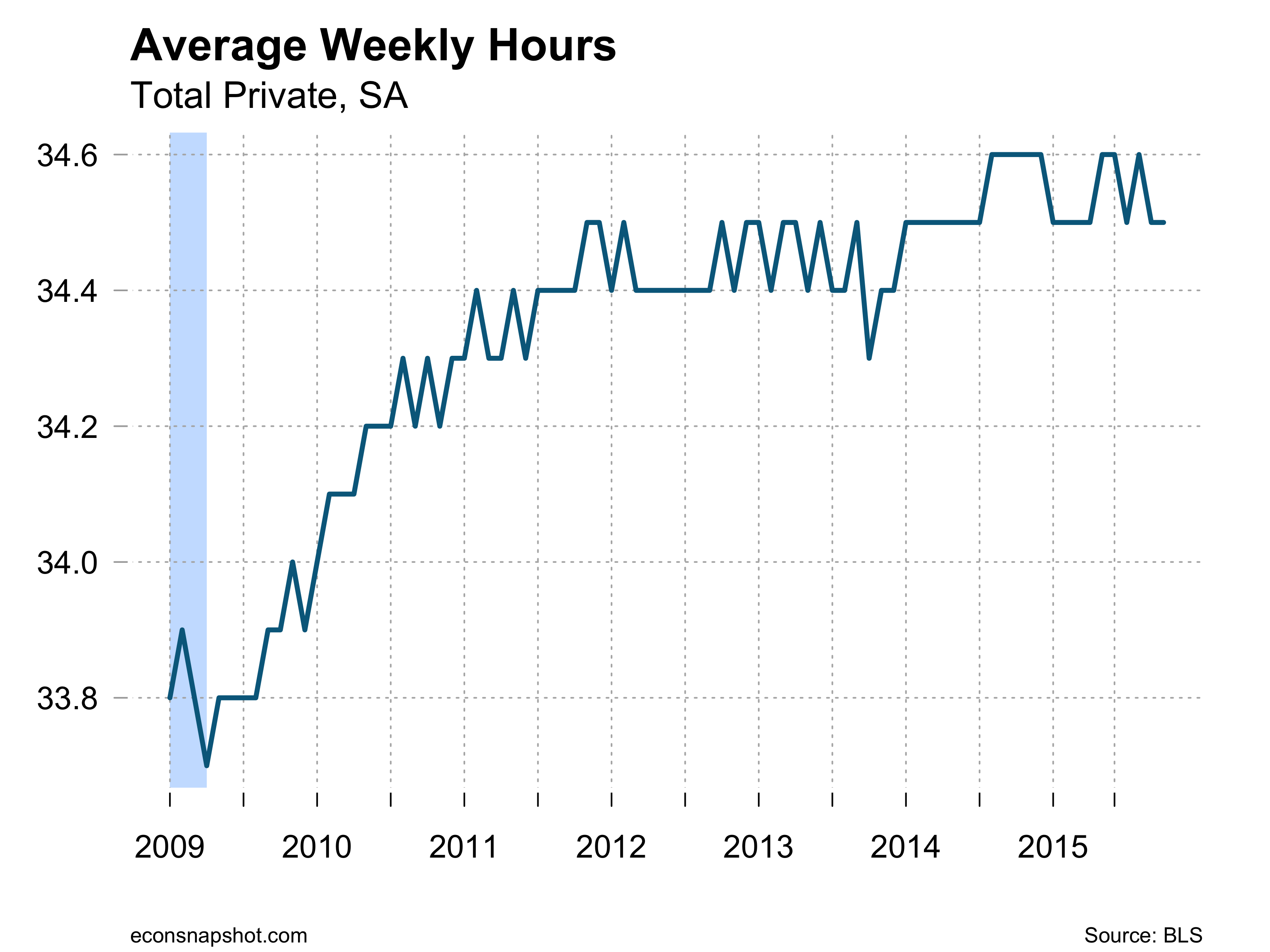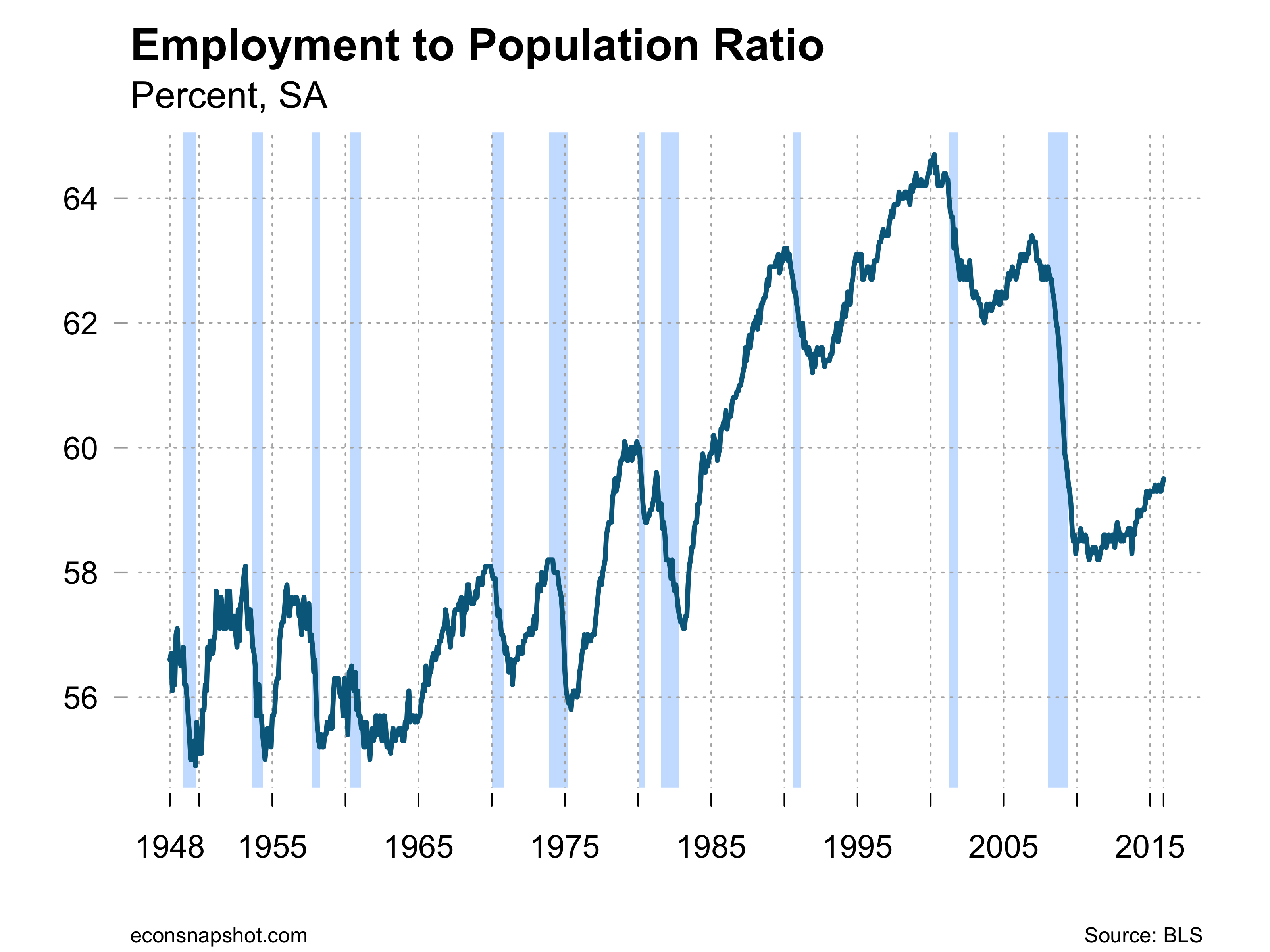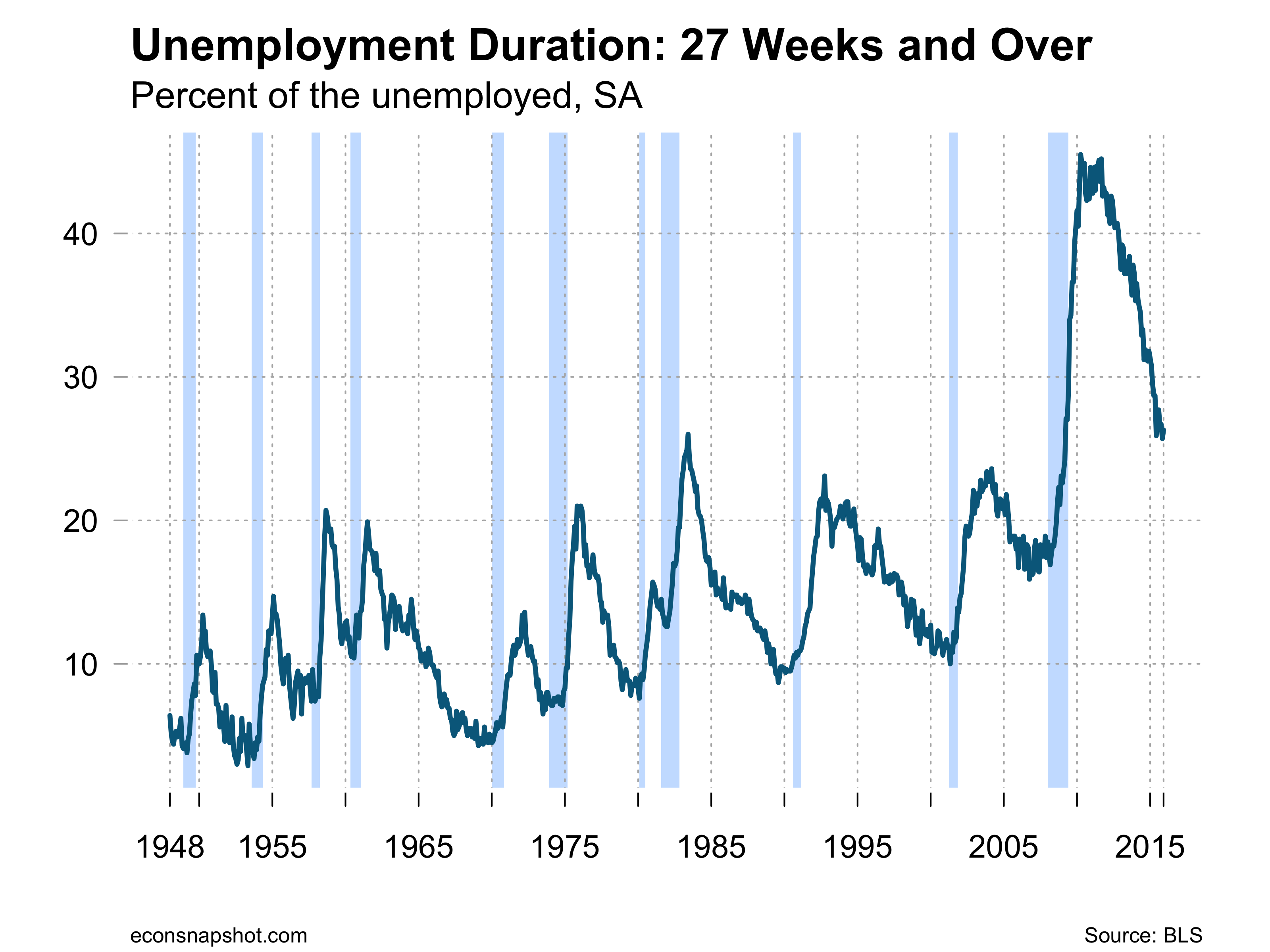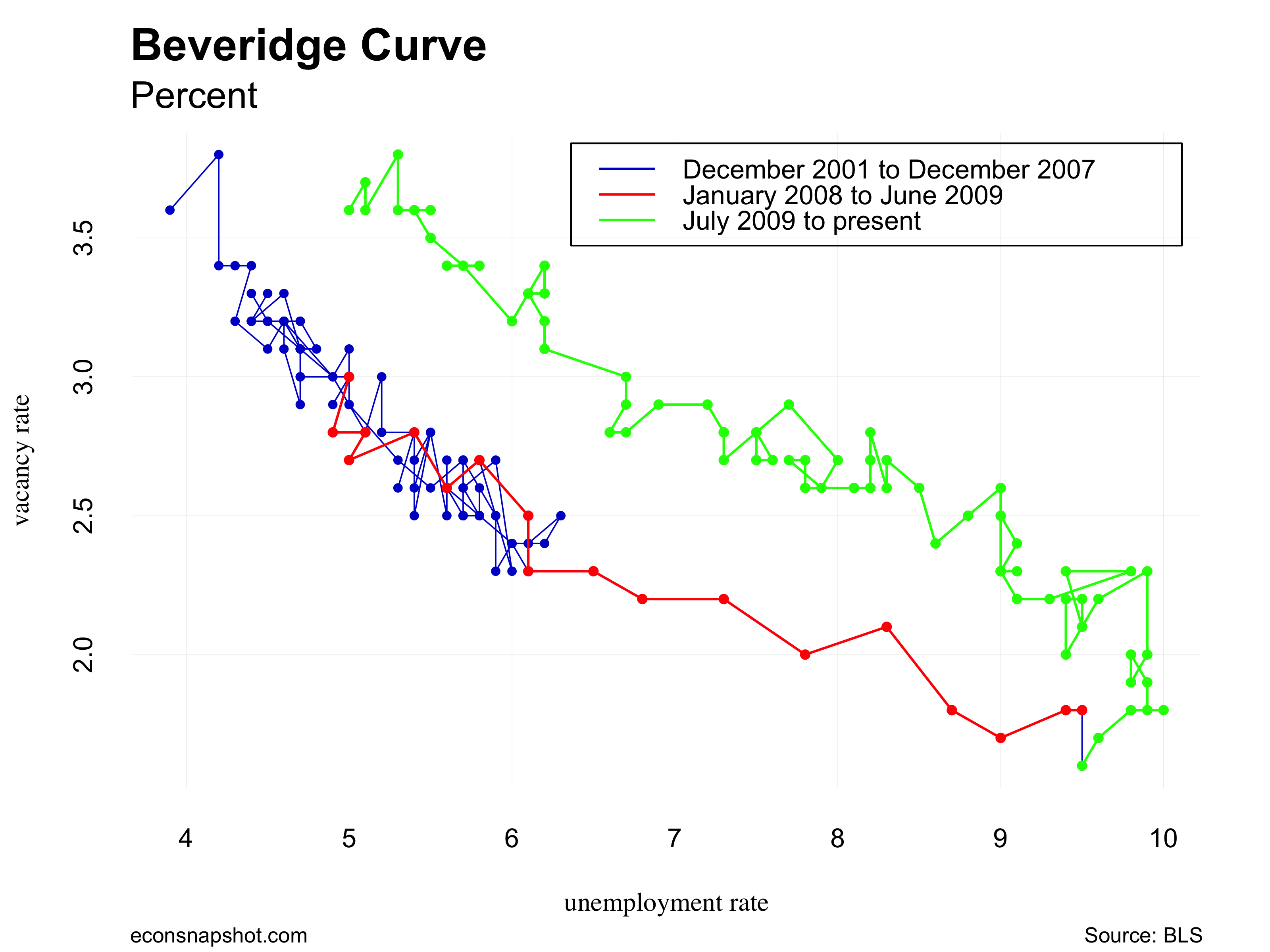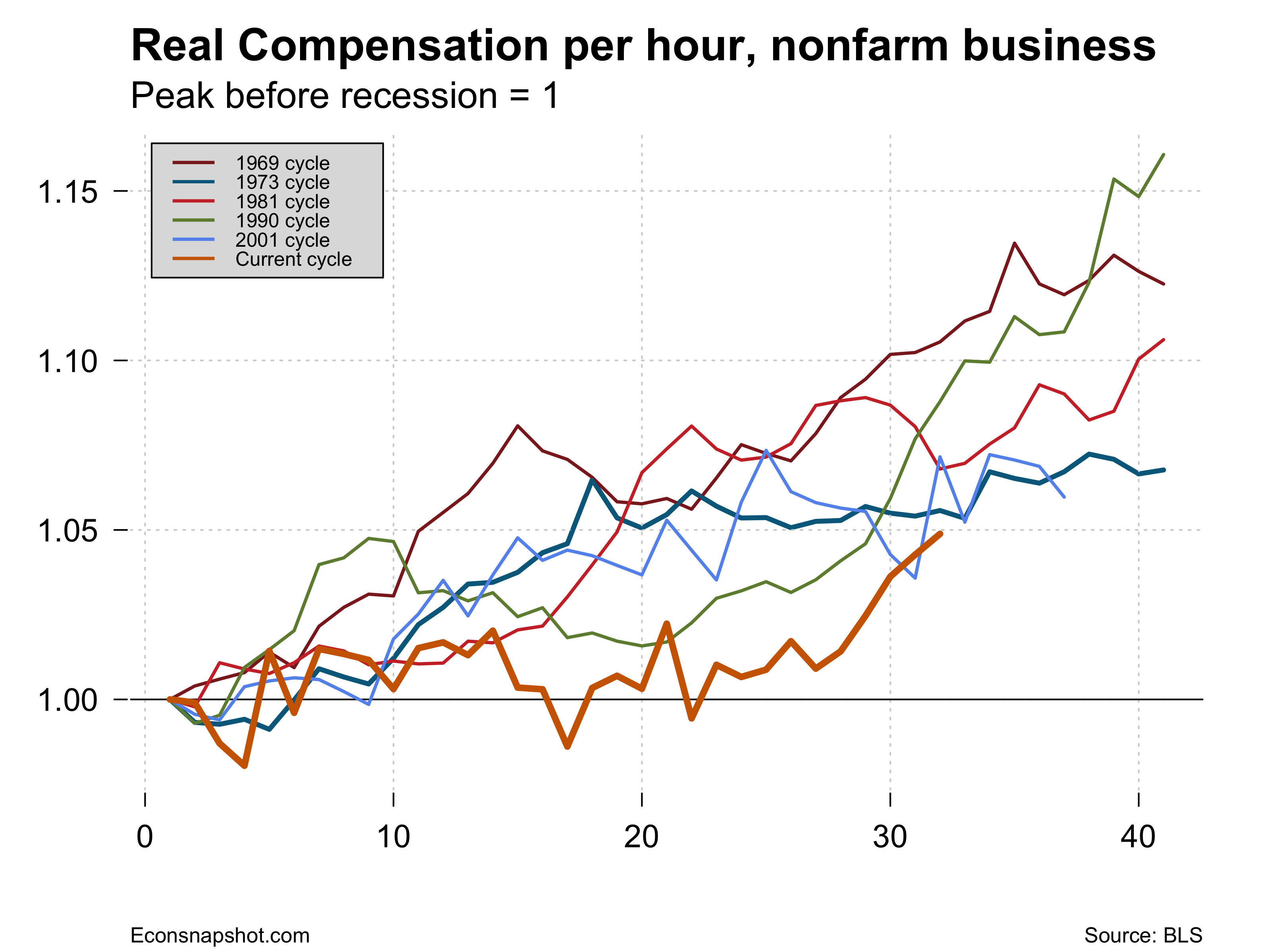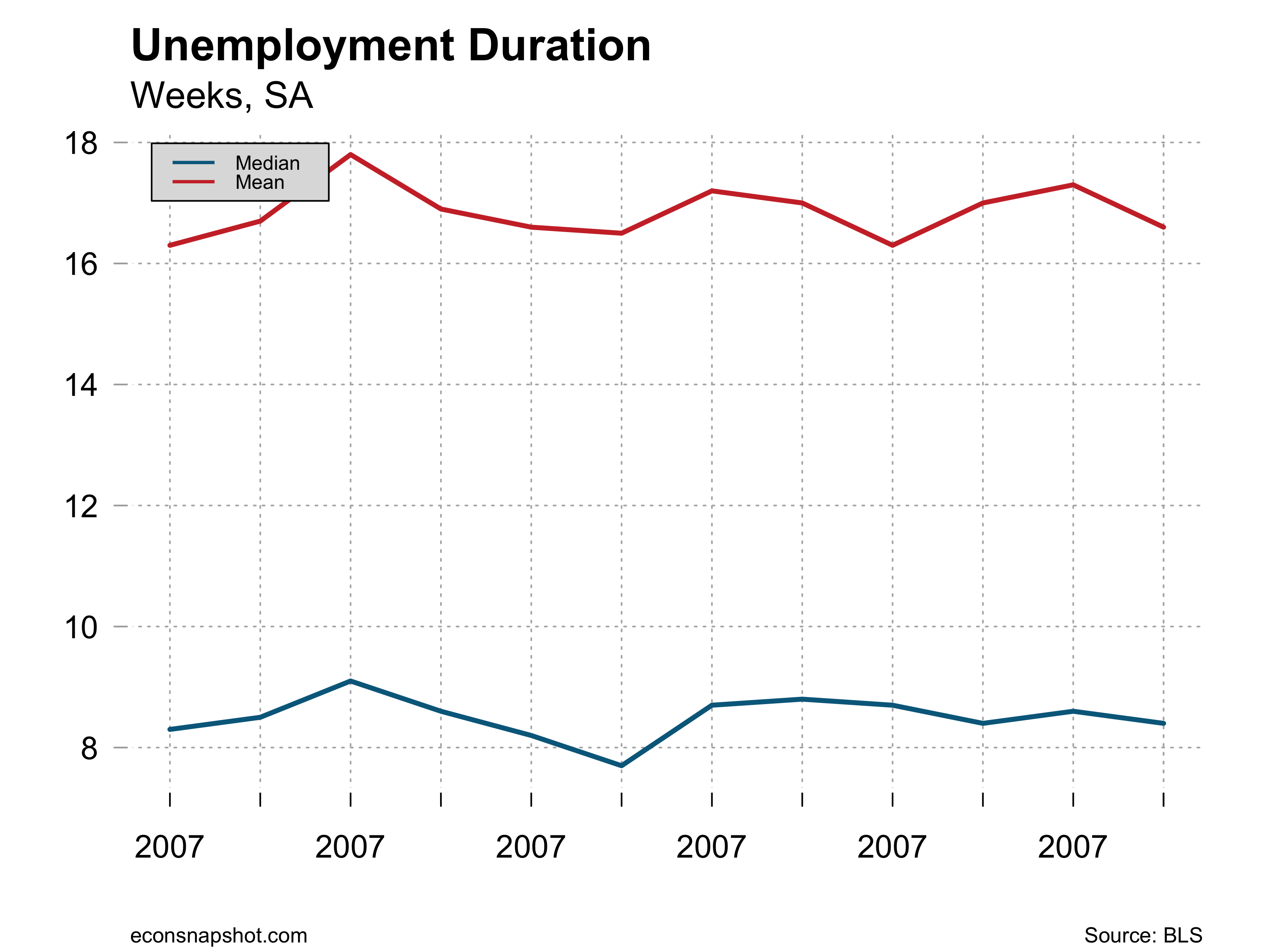by Thomas Cooley, Ben Griffy and Peter Rupert
The December employment situation delivered this morning from the BLS showed continued strength across the board. Payroll employment increased 292,000 and the news gets better as payrolls were revised up for both October (+9,000) and November (+41,000). The mining and logging sector continued to decline, falling another 8,000 after falling 11,000 in November and 1,000 in October as a result of the continued decline in oil prices. The motor vehicle and parts sector also fell for the third straight month, shedding 6,500 jobs over that time span.
Most of the job gains were in the service sector with health care and temporary services showing significant gains. In the goods producing sector most of the gains were in construction.
Average weekly hours were essentially unchanged as were average hourly earnings. The latter is important because it means that strong job growth has not yet generated more upward pressure on wages. But a more careful look at wages is provided by the Federal Reserve Bank of Atlanta’s wage tracker. It shows across a broad set of categories a three month moving average of median wage growth of roughly 3.1% . This is a sign of a healthy labor market. The labor force participation rate and the employment population ratio also inched up very slightly. These strong results provide some validation for the Federal Reserve’s first interest rate hike in nearly a decade, which occurred in December.
Global weakness as well as falling oil prices still loom on the horizon. On two separate occasions this week, the Chinese stock market fell by more than 7 percent, prompting a halt to trading on Wednesday. Uncertainty about the interest rate environment, as well as concern about the Chinese stock market caused the Dow, Nasdaq, and S&P 500 to close down, despite the strong jobs report. This, among other data concerns prompted GDP Now, a predictive algorithm maintained by the Federal Reserve Bank of Atlanta, to revise its estimate of quarterly GDP in the fourth quarter of 2015 from 1.0 percent to 0.8 percent.
Many observers noted weakness in the U.S. economy in the fourth quarter – signs that showed up mainly in the purchasing managers indices and industrial production. So far that pressure has not appeared in the U.S. labor market. The number of people employed part time for economic reasons has continued to decline as has the duration of unemployment.
How long this recovery can continue in the face of much global turmoil remains to be seen, but for the time being the major puzzles of the labor market seem to be structural not cyclical. We will discuss these structural issues in a subsequent post.
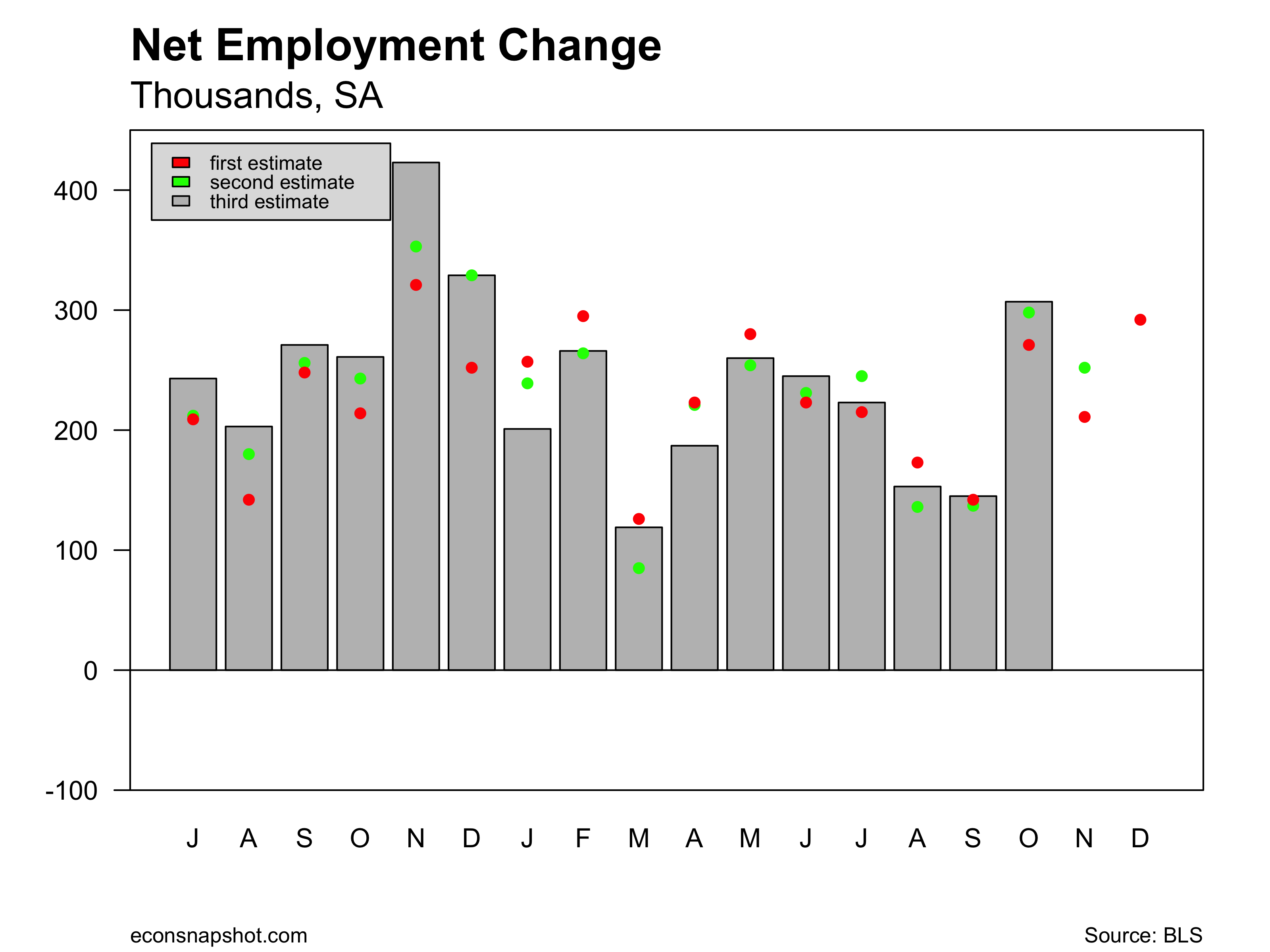
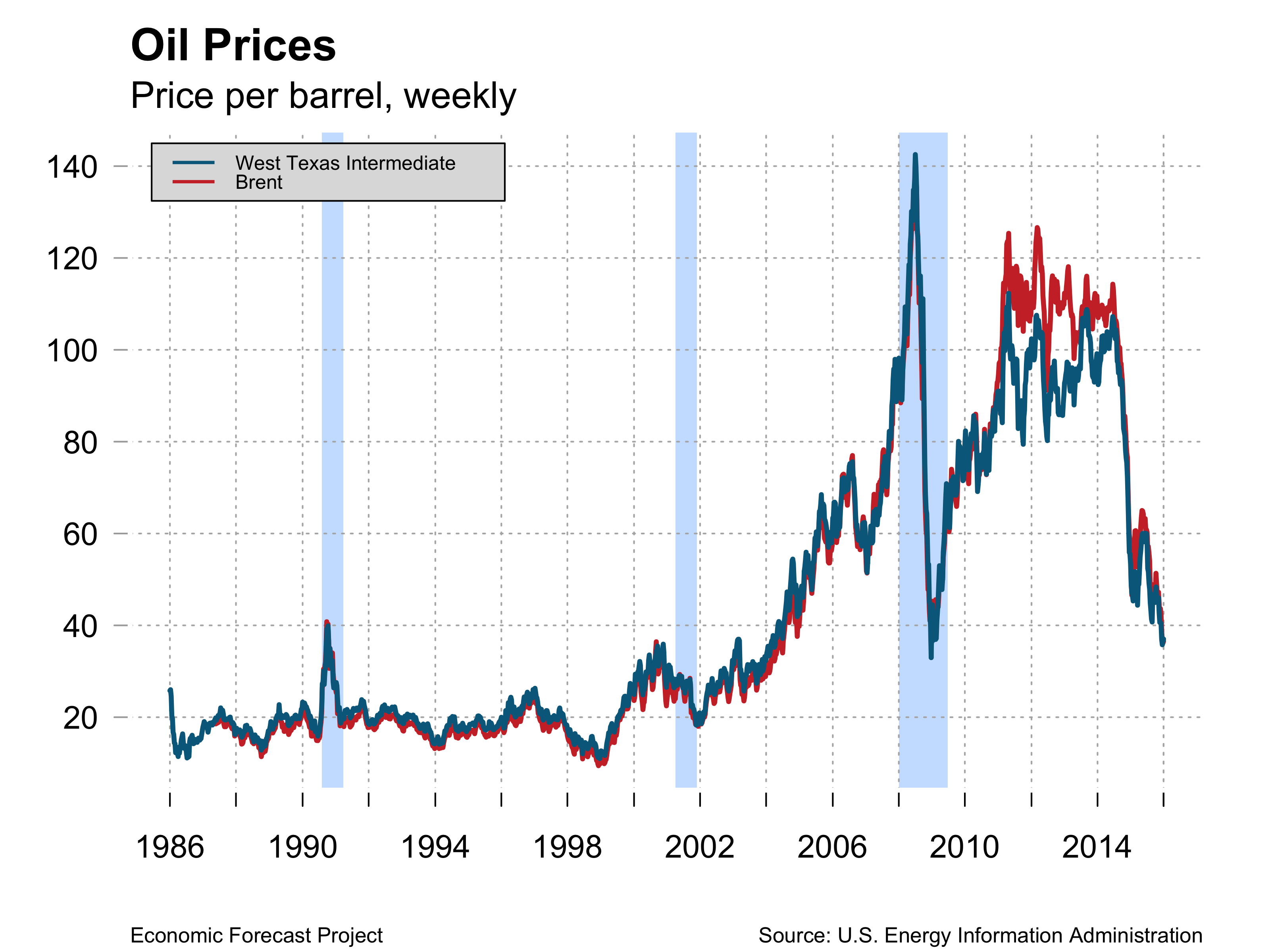
Average hours of work remained at 34.5 and average hourly pay fell slightly to $25.24 from $25.25.
